
Marketing
Why are reviews important for your retail store?
Reviews guide customers as they make choices, foster trust, and can even give sales a significant lift. If your clothing...
9 Ways to Create a Personalized Shopping Experience for Your Online Fashion Store
Marketing
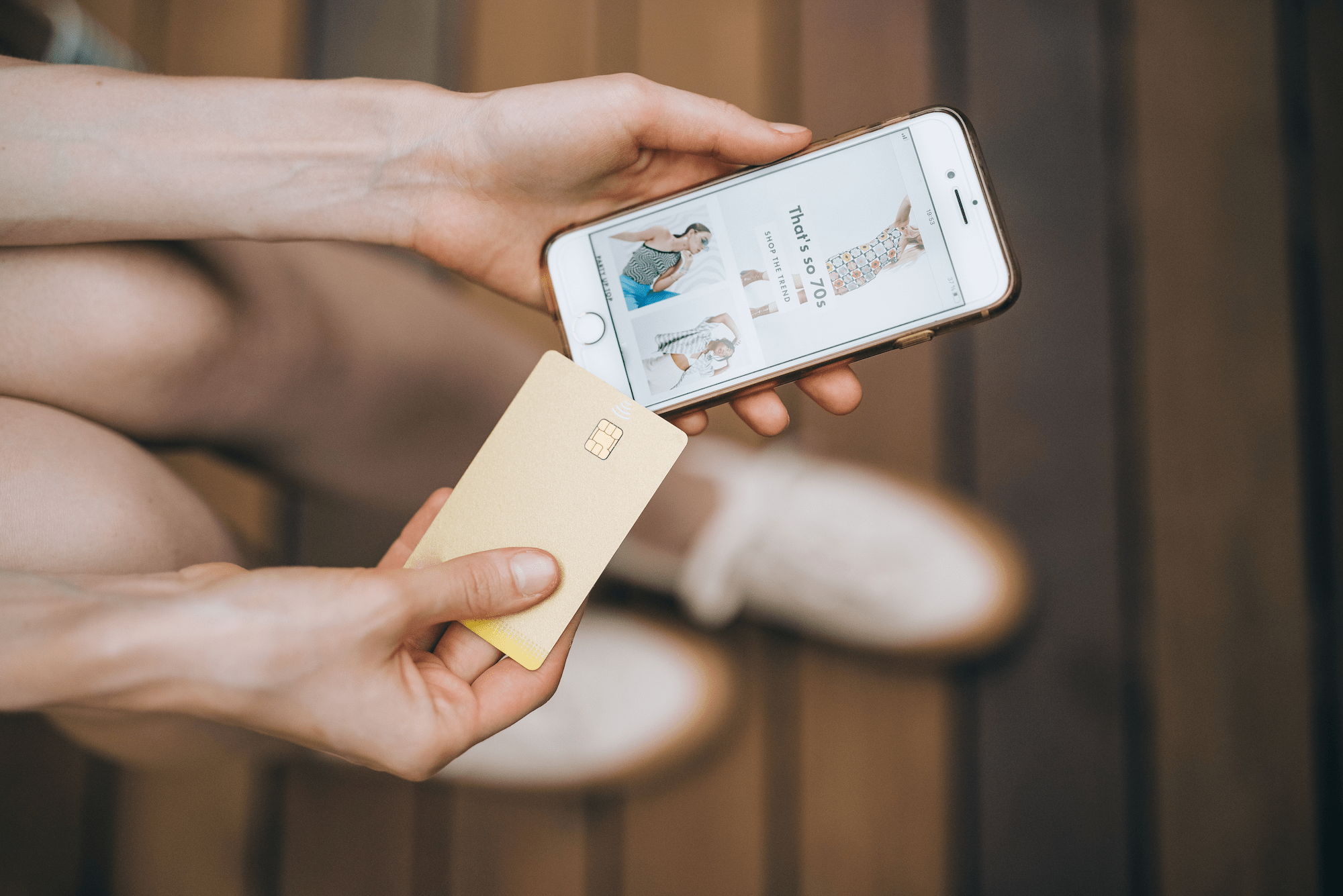
As the market of online stores becomes increasingly crowded, offering a personalized shopping experience can set your fashion business apart.
An Epsilon study reveals that up to 80% of customers are more inclined to make a purchase from brands that offer such an experience.
The reason for such a high number? With all of the tech advances going on, nowadays, customers expect online shopping to be tailored to their preferences more than ever.
This expectation has evolved from the desire for a shopping experience that not only understands their style and preferences but also anticipates their needs, offering a level of service that feels both intuitive and exclusive.
As a result, online retailers who can provide this level of personalization are more likely to win customer loyalty and repeat business.
In this article, we delve into 9 innovative strategies to create a personalized shopping experience for your online fashion store.
Let’s get started!
A personalized shopping experience refers to a retail strategy that tailors the shopping process to individual customer preferences and behaviors.
In a lot of cases, providing such an experience entails using customer data to create a unique, customer-centric shopping journey.
This approach in online fashion retail aims to provide customers with relevant product recommendations, tailored content, and a shopping environment that feels uniquely suited to their tastes and needs, making them feel understood and special.
Providing a personalized shopping experience can have a profound impact on your sales – hence, the reason why so many stores have been implementing this strategy.
How do we know this? According to Statista, the CX (customer experience) and optimization software market passed 9 billion USD in revenue last year and it’s expected to reach close to 10 billion USD by the end of 2024 – proving that businesses worldwide have been investing in personalization tools more than ever.
Key benefits of offering a personalized shopping experience include:
One of the most effective ways to create a personalized shopping experience is by providing personalized product recommendations.
By analyzing their past purchase history, browsing behavior, and preferences, you can suggest products that are relevant and appealing to each individual.
For example, if a customer frequently browses evening dresses, your store can recommend similar styles or accessories that complement their interests.
Take a look at the approach clothing store Chico’s has taken. Each of their products is accompanied by a ‘How to wear it’ section that provides customers with style tips and suggestions on how to pair the item with other pieces and accessories.
This feature not only helps in decision-making but also adds value by offering fashion insights, thereby enhancing the shopping experience and potentially increasing their average order value.
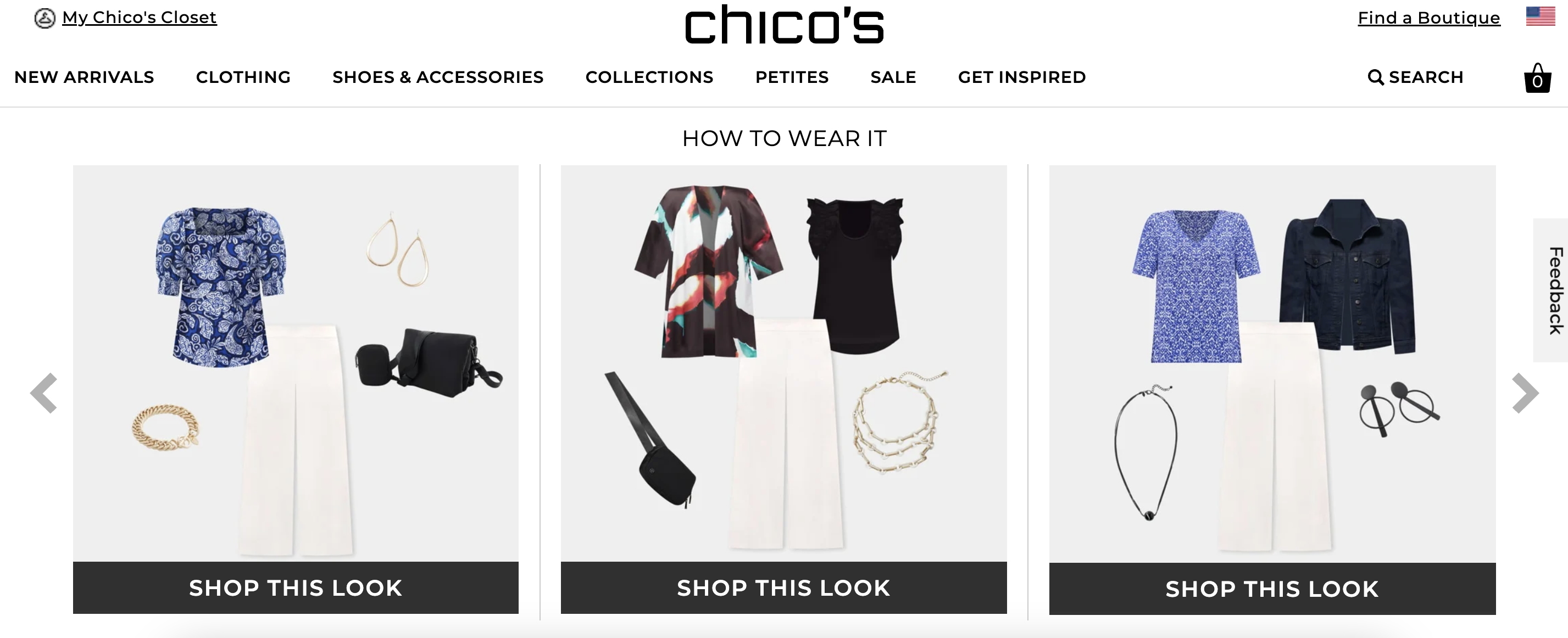
Lulus provides a similar approach by offering a ‘Complete the look’ section on their checkout page. This feature strategically suggests additional items that pair well with the chosen product, encouraging further exploration and potential purchases.
On top of that, they also display ‘Similar items’ suggestions, which offer alternatives that match the style or category of the product being viewed.
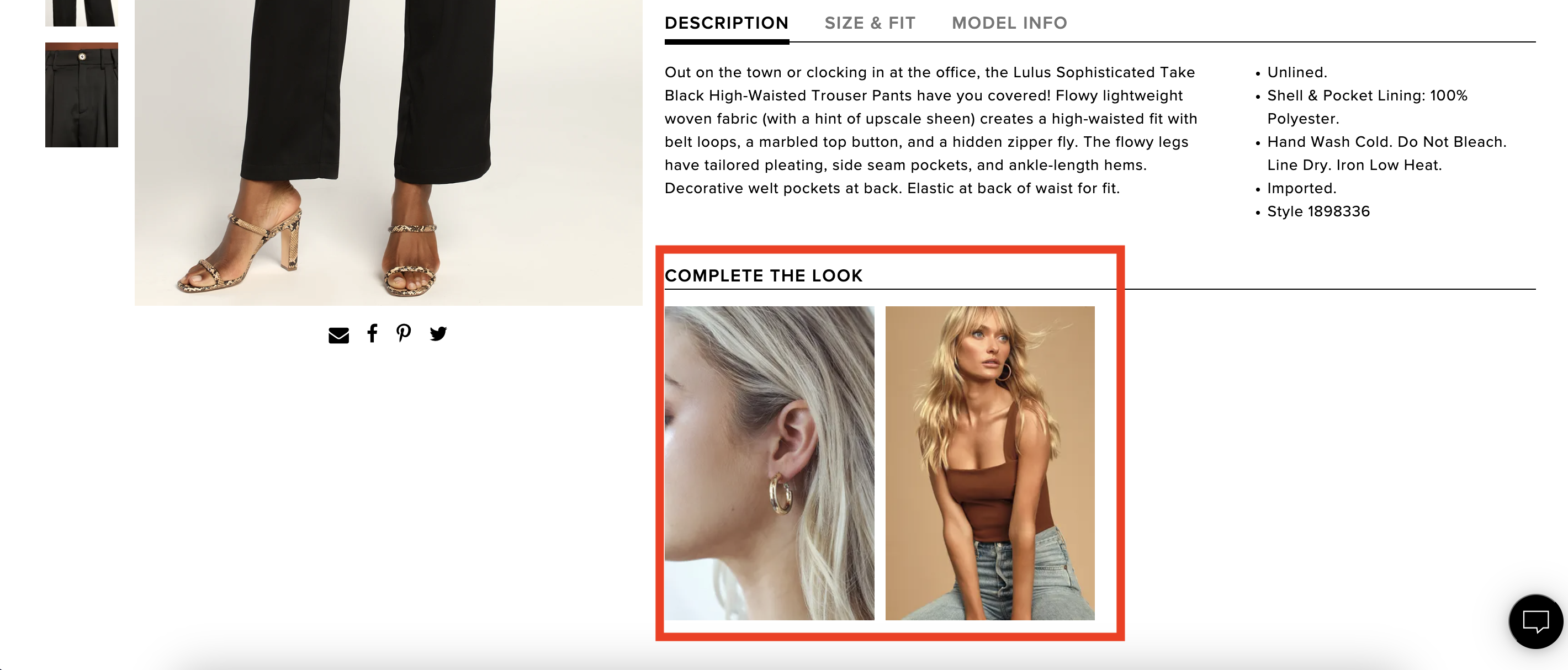
Transform the shopping journey of your customers into an engaging experience with interactive product guides.
These interactive elements can offer personalized styling advice, product pairings, or even size recommendations based on customer inputs like body type, style preferences, or occasion wear.
For example, a customer planning for a beach vacation could receive suggestions for swimwear, hats, and sunglasses, tailored to their size and preferred colors or patterns.
The goal here is to replicate the personalized service of a physical store, making online shopping not just convenient but also highly relevant and satisfying for the customer.
This is exactly what clothing store QUIZ has done. For their women’s swimwear category, as well as the rest of their products, they’ve created a styling guide that allows their customers to quickly filter through their products and find the perfect piece of swimsuit for their needs.
Customers can fill in their size, product type, color preference, and budget, and the store will automatically generate a tailored product selection that meets their specified criteria.

Implementing style quizzes and surveys on your website is another highly effective strategy to help you gather valuable insights into your customers’ shopping preferences.
This information can be used to personalize product recommendations and tailor your marketing efforts to better suit the needs of your customers.
Online bag store KNKG takes full advantage of this strategy by creating a super helpful quiz that helps customers decide the exact kind of bag they need.
The quiz asks for the following information:
Once customers have answered these questions, the store displays the best matches based on their answers accompanied by a direct shopping link to the products.
Check out: Most popular types of bags to dropship
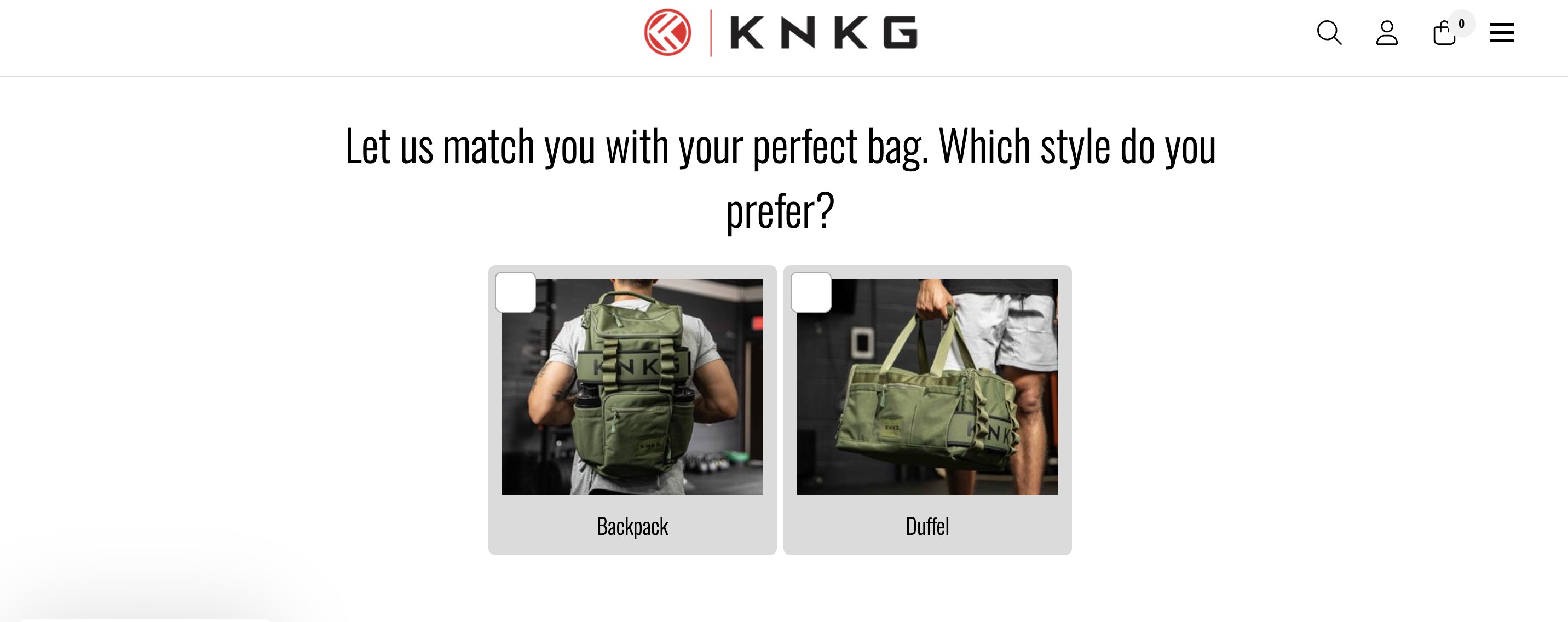
Cashmere jumper store Esperance & Co has created a similar interactive quiz as well that helps customers choose the perfect jumper color based on their skin tone, hair color, and eye color.
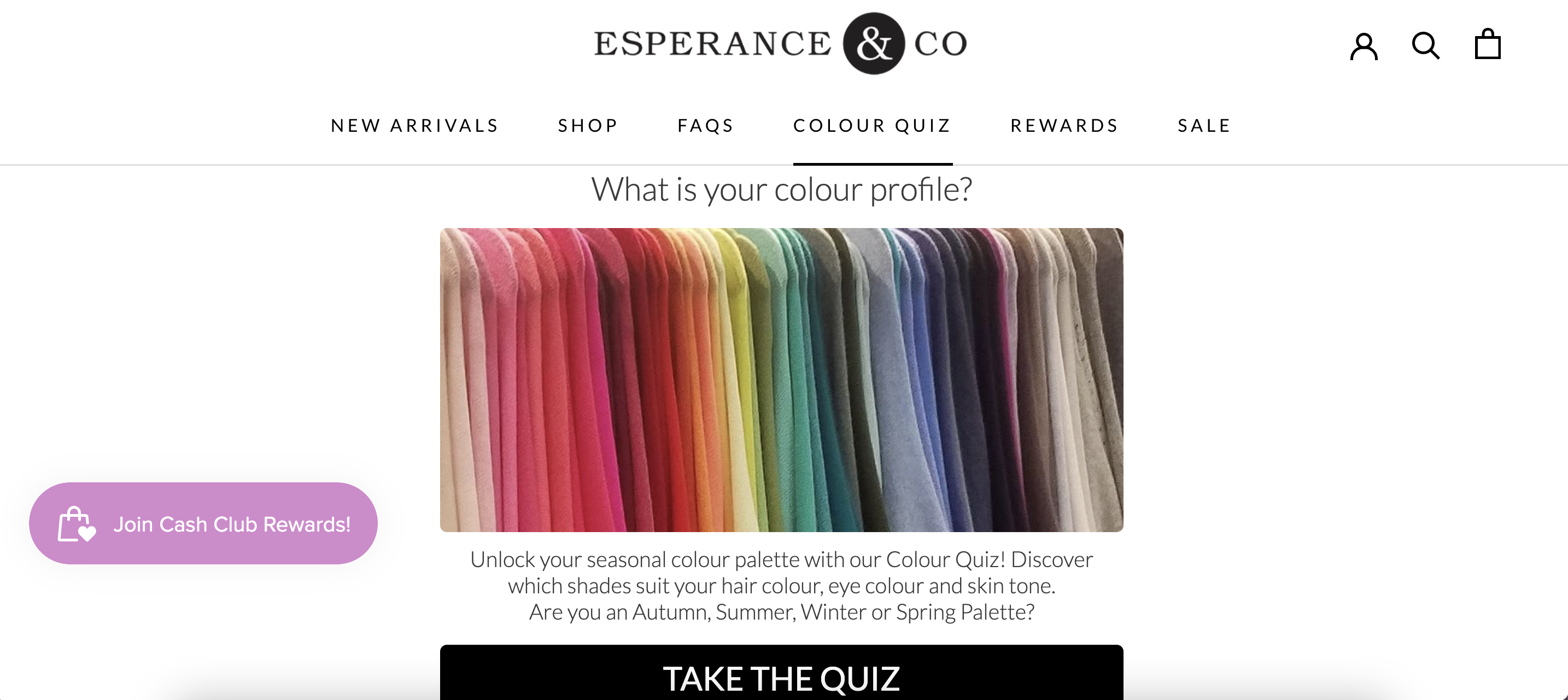
Wishlist reminders are notifications sent to customers reminding them of items they’ve shown interest in by adding them to their wishlist on your online store.
These reminders are a key strategy for fashion eCommerce stores as they re-engage customers by prompting them to revisit items they considered but didn’t purchase initially.
Sending wishlist reminders is beneficial because it keeps your products top-of-mind and encourages repeat visits to your site, potentially leading to sales.
By personalizing these reminders based on the customer’s specific interests and browsing history, you create a more tailored and engaging shopping experience.
Geolocation targeting is a strategy that involves tailoring the shopping experience to the customer’s specific location.
If a customer from a colder region visits your store, they could be shown the latest winter fashion trends, whereas a customer from a tropical area might see summer collections.
Additionally, geolocation also includes customization based on local language preferences, currency, or size charts.
Augmented reality and virtual try-on tools are slowly but surely revolutionizing the online shopping experience.
This not only adds a new element of fun to shopping but also reduces the likelihood of returns due to fitting issues.
Companies like sunglasses store Warby Parker have successfully implemented such technology by allowing customers to try on their glasses virtually.
Check out: Most popular types of sunglasses to dropship
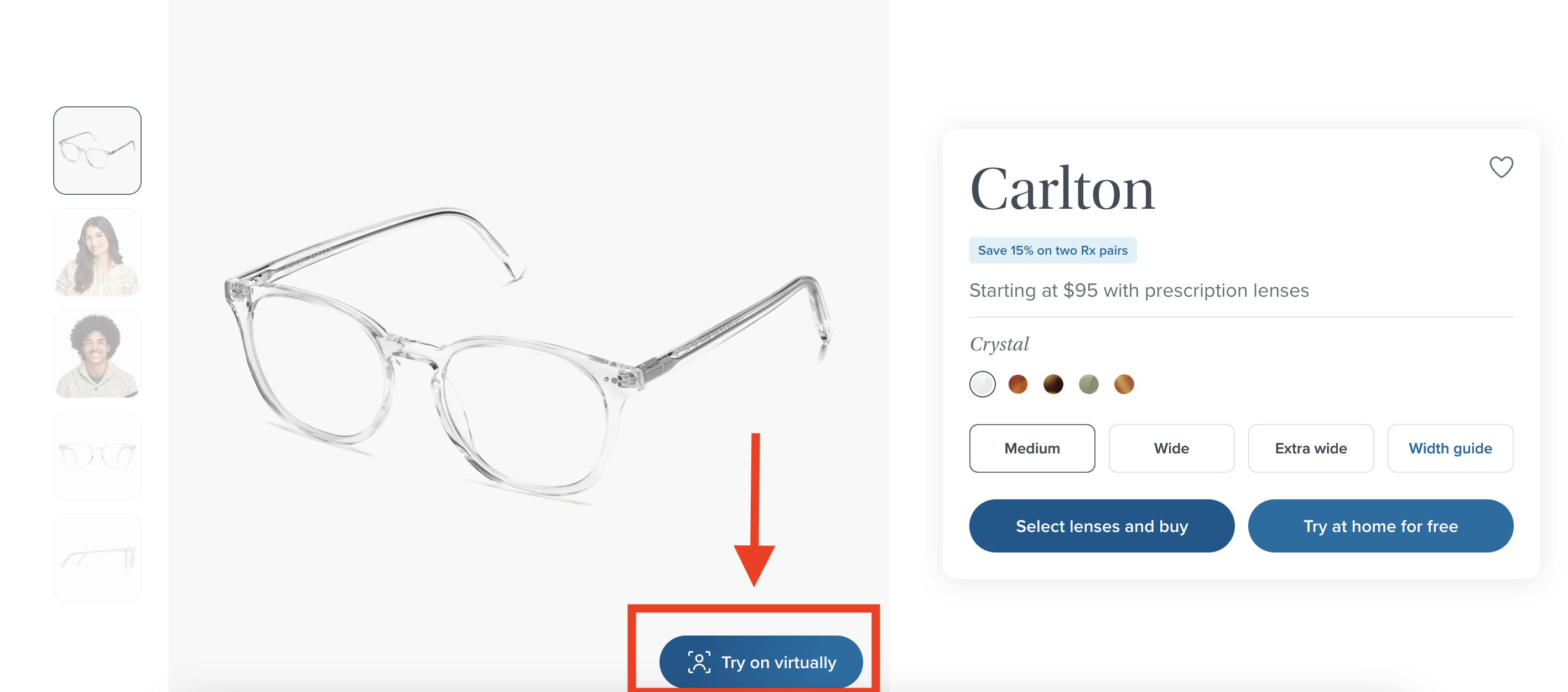
Encourage your customers to leave reviews that go beyond star ratings. Detailed reviews about fit, material, and styling can greatly assist other shoppers.
Take for example the reviews left by shoppers at Yours Clothing. The store showcases customer feedback that includes personal experiences with their products, addressing their fast delivery, and praising their customer support.
This level of detail in reviews not only provides potential customers with valuable insights but also enhances the credibility of your products.

Providing personalized customer service through various channels such as live chat, email, and social media can make a whole lot of significant difference in the shopping experience of your customers.
For instance, using AI for communication, such as customer support tools like Freshdesk and Zendesk, is known to offer quick solutions to customer queries. On top of that, AI can also provide personalized responses.
Chatbots are able to do this by analyzing customer interaction history. These advanced systems can understand customer preferences, purchase history, and even the tone of previous communications.
This allows them to tailor their responses, making them more relevant and personal.
It’s no secret that offering a personalized shopping experience can lead to increased customer satisfaction, loyalty, and sales.
Throughout this article, we’ve explored various ways to achieve this: from customized support by using chatbots and creating interactive quizzes to providing product recommendations and leveraging geolocation targeting.
By implementing these best practices, you can create a unique and tailored shopping journey for each of your customers.
Trust us, your customers will thank you.
What is dropshipping?